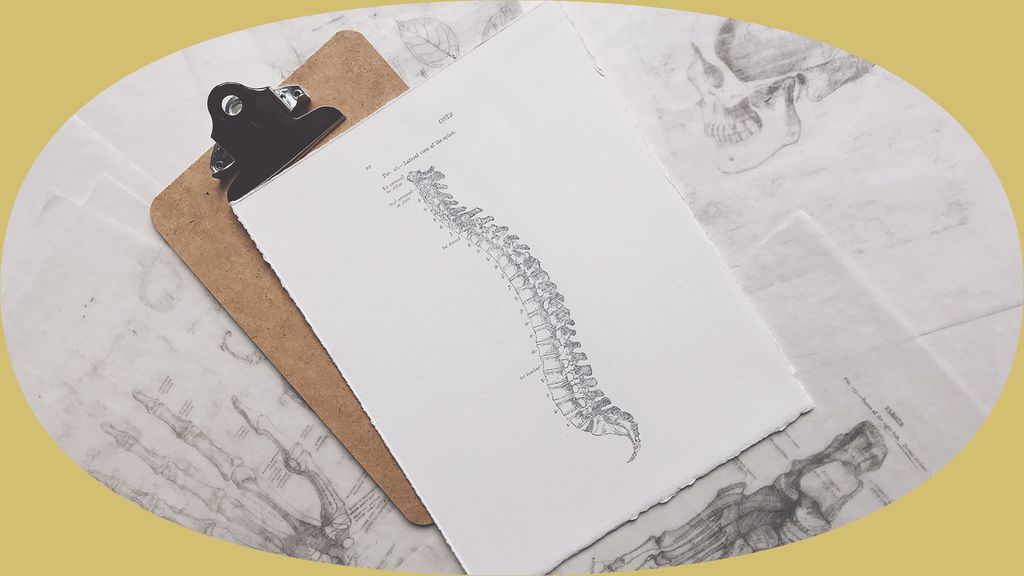Tips for Avoiding WFH Injuries and a Trip to the Chiropractor

by Nathan Allen

One unintended consequence of the great migration to remote work has been employees developed WFH-related injuries in their home office settings. According to a survey from the American Chiropractic Association, 92 percent of the 213 responding chiropractors reported having more patients complain of back or neck pain, among other musculoskeletal issues in early 2020, after the stay-at-home orders were implemented.
Simple changes and updates to home office setups could help avoid these types of injuries. We’ve put together a list of the most common WFH injuries and tips to avoid them.
Neck and Shoulder Pain
There’s no fancy terminology for it, but chronic neck and shoulder pain is one of the most common remote work injuries people experience. Hunching over a laptop for long periods of time is the usual cause for this annoying, sometimes debilitating pain.

Because working from home was initially considered temporary, many people typed away on sofas, at kitchen tables, or in other makeshift workplaces instead of setting up a more permanent space. As we know, weeks have turned into months. The soreness caused by constant hunching or odd positioning has turned into consistent pain for many workers.
If it looks like you’re going to be working from home for the foreseeable future, it’s probably time to invest in an ergonomically friendly chair and desk setup. (For an in-depth look at an ideal home office space, go here.)
You could get super spendy and pay more than $1,000 on a designer ergonomic chair, but there are much more affordable options on Amazon and elsewhere. Periodically using exercise balls or chair attachments also helps to reduce strain.
A proper desk is paramount to an ache-free WFH environment, just as important as an appropriately fitting backpack is to hiking. The majority of working hours are spent at the desk, which means there’s ample opportunity to either improve your posture or create aches and pains there. It’s worth considering an electric standing desk; you can adjust it to the optimal height while sitting or standing.
Lower Back and Hip Pain
Again, these are not glamorous injuries, but they are very common. Besides making sure you have an ergonomic chair, there are some simple steps you can take to prevent—or at least lessen—lower back and hip pain.
Start your day with some stretching exercises that focus on this targeted region. We love this 20-minute lower back and hip release yoga session. If you’ve only got a few minutes, try knee-to-chest and side-bend stretches. For the former, lay on your back and pull one knee at a time to your chest, far enough to where you feel a stretch but not pain. Hold for 30 seconds and repeat with the other leg. For the latter, lower your right hand down your right leg sideways—again, far enough to feel the stretch while avoiding any pain. Hold for 10 to 15 seconds and repeat on the left side.
Be mindful of your posture. Throughout your workday, stop and take stock of how you’re sitting. Is your butt pushed far back into your chair or are you slumping? Is your spine straight? Are your arms bent at a 90-degree angle while typing? Are your shoulders pressing up against your ears or are they in a relaxed position? If you have trouble remembering to do posture checks, set an alarm on your smartphone to remind you.
Take breaks. Shoulder, neck, back, and hip pain often results from overuse. Sitting in the same position for hours at a time without breaks will create chronic pain. Be sure you’re moving every hour or so, even if it’s simply standing up and sitting back down or taking a lap around the house. If you’ve got five minutes, we recommend this office-based workout.
Tight/Sore Hamstrings
Many desk dwellers have hamstrings in a near-constant state of soreness due to weak glutes, which can manifest from long periods of inactivity—i.e., constant sitting—and can tighten hip flexors (found at the front of the hips). When the butt muscles are weak, the hamstrings have to work extra hard to compensate, causing tight and sore hammies.
To avoid hamstring pain, strengthen both the glutes and the hamstrings and stretch the hip flexors. Try these helpful glute-strengthening exercises and these 12 hip stretches.
Carpal Tunnel Syndrome and Other Wrist/Hand Soreness
Carpal tunnel syndrome is a common condition that typically impacts people who use computers for hours on end. Too much repetitive pressure put on the median nerve in the forearm can cause tingling and numbness in the fingers and hand. Some research suggests that computer-related carpal tunnel syndrome is caused more from mouse use than the keyboard.

There are multiple measures to prevent carpal tunnel syndrome. First, relax and go easy on the keys and mouse; there’s no need to forcefully hit keys or zoom the mouse around at the speed of light. Second, take frequent breaks—although it’s easy to get in the typing zone, try to stop every hour, giving the hands, fingers, and wrists a rest. Lastly, watch your posture, making sure you’re not straining when using your mouse and keyboard.
Eyestrain
Too much screen time is a real thing, and it often causes eyestrain. At best, eyestrain is uncomfortable, leading to tired or achy eyes. At worst, it can cause headaches and even soreness in your shoulders or back. Though prolonged screen time is the main culprit, intense reading can bring on eyestrain as well.
Fortunately, eyestrain can easily be treated—simply stare at the screen less, and it often goes away quickly. To help prevent it in the first place, try soft lighting around your computer screen. If you spend more time reading printed materials instead, position the room’s main light behind you, pointed directly at what you’re reading. Additionally, blink often and take breaks. Blinking will reset your eyes and breaks will help readjust them. Try the 20-20-20 rule: Every 20 minutes, look at something 20 feet away for at least 20 seconds.
There will be times when you just can’t avoid staring at a screen for hours. In those cases, we recommend investing in a pair of blue light blocking glasses. Amazon sells multiple options for less than $20.
Aches and pains are common for people spending long stretches of time in front of a computer, and physiotherapists are already reporting that the incidence of WFH injuries is only rising in today’s increasing remote work environment. So do yourself a favor by taking preventative measures now to avoid potential bodily harm later.









